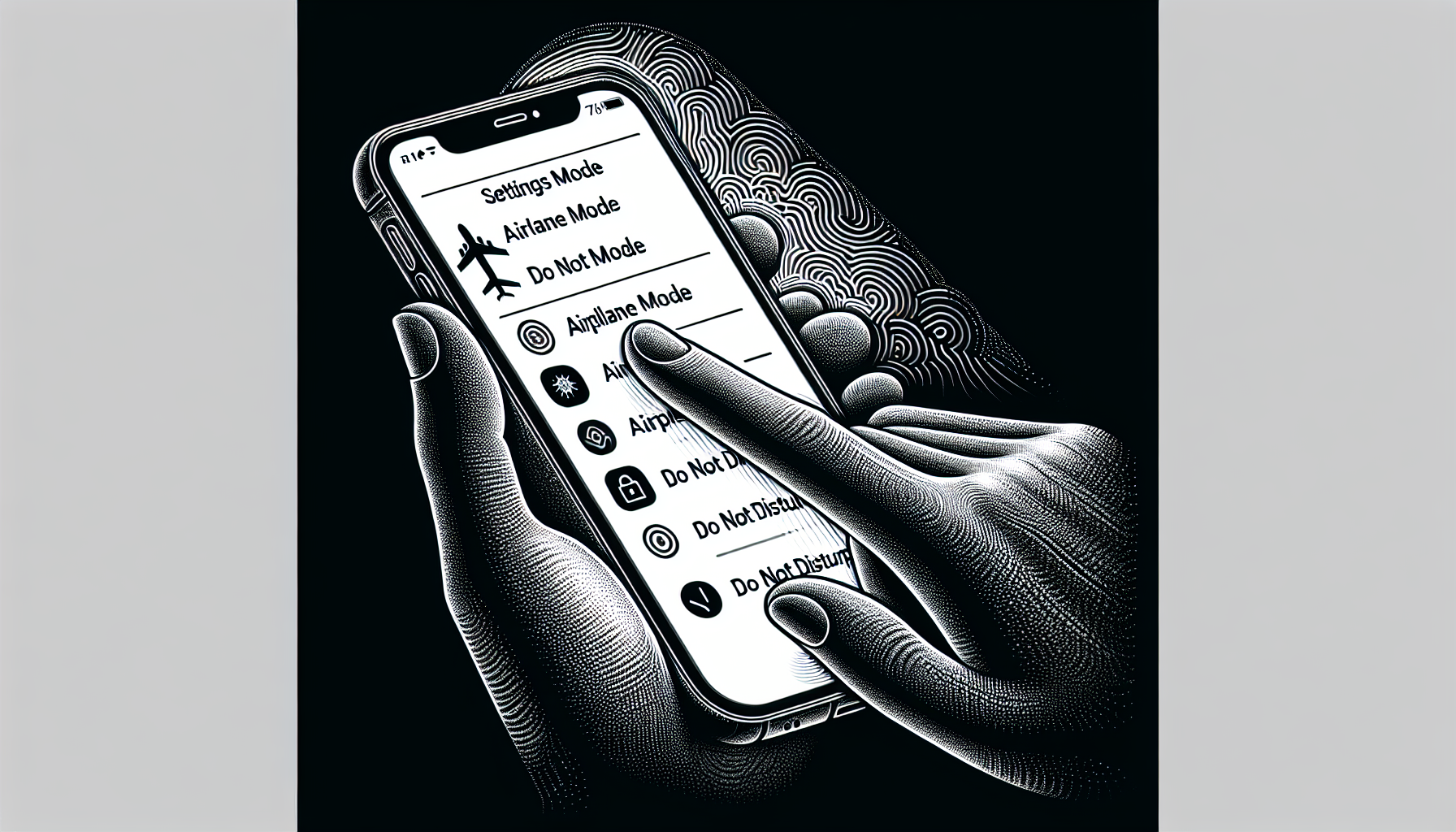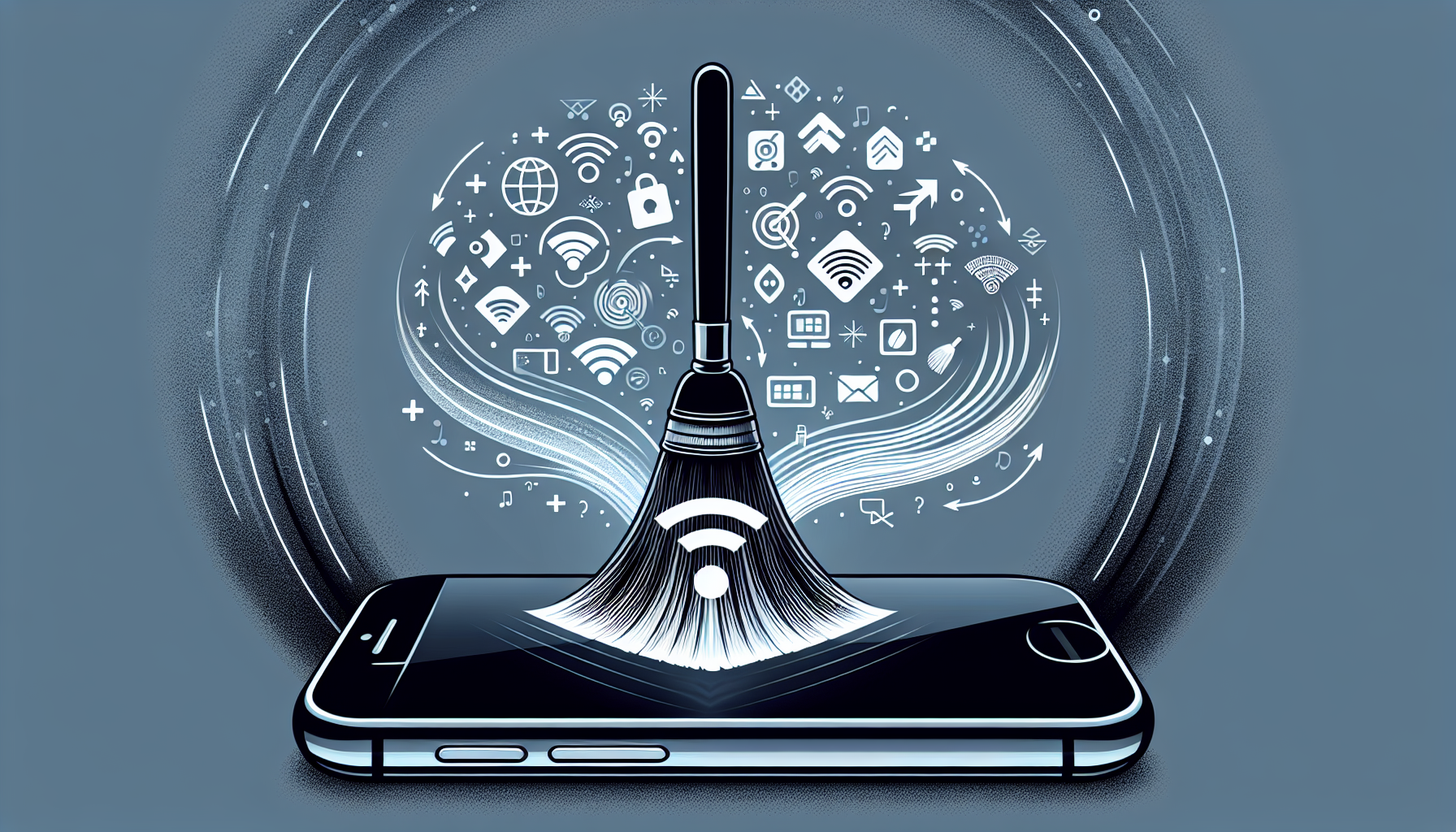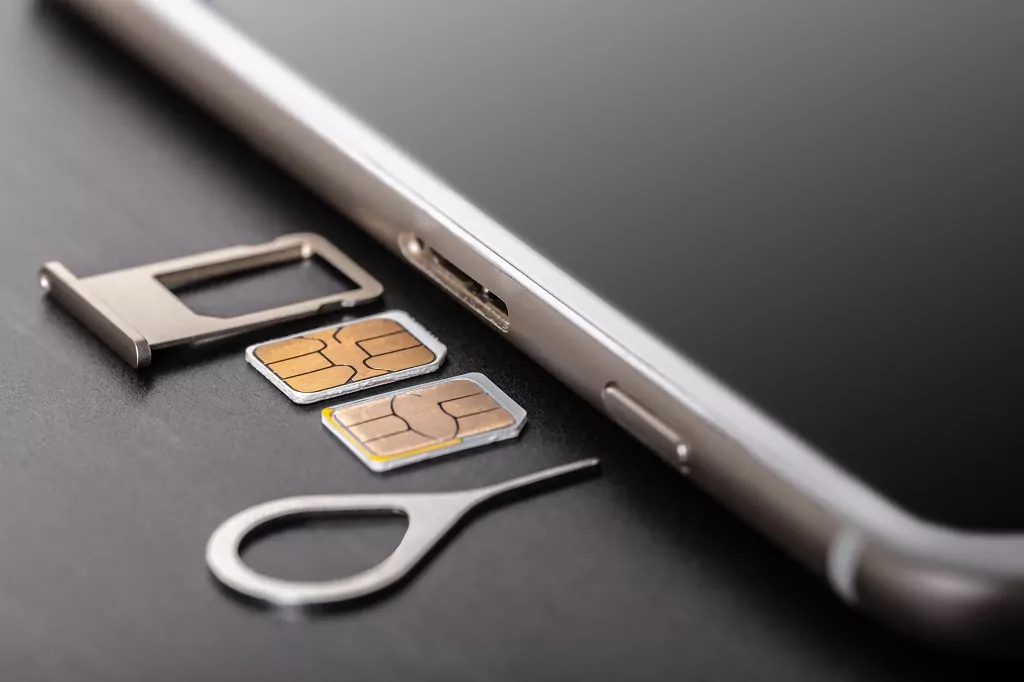Struggling with your iPhone’s inability to make calls? This article dives into the common causes and practical fixes for when your phone falls silent, focusing on “why is my phone not allowing me to make calls on iPhone” issues.
Without any fluff, we’ll explore network hiccups, SIM card issues, and iOS quirks that might be the culprit, so you can quickly return to making calls.
Key Takeaways
- Various common causes for iPhone call issues include network settings problems, SIM card malfunctions, and iOS system glitches, each requiring different troubleshooting techniques.
- Initial troubleshooting steps include checking Airplane mode and Do Not Disturb settings, resetting network settings, updating carrier settings and iOS versions, and examining the SIM card and tray.
- For persistent call issues, advanced solutions involve contacting the mobile carrier for potential hidden issues, using specialized iOS system repair tools, or seeking help from Apple Support.
Understanding the Causes: Why is my phone not allowing me to make calls on iPhone?
Imagine the scenario: you’re about to make an important call on your iPhone, but to your dismay, it just won’t connect. The reasons behind this can be as varied as the many iPhone models gracing our pockets and purses.
From the intricate web of network settings and SIM card sorrows to the occasional iOS system glitches, the culprits are many and often elusive. Understanding these common causes is your first step toward reclaiming your iPhone’s call capabilities and staying connected to your world.
One might think their iPhone is simply being obstinate, but in reality, these issues are often rooted in complex software and hardware interactions. Network settings might be twisted into knots, the SIM card could be playing hide and seek, or the latest iOS update might have thrown a spanner in the works. Let’s unravel these threads one by one, starting with the backbone of any mobile device: the network settings.
Network Settings
At the heart of your iPhone’s ability to make and receive phone calls is a maze of network settings. These settings are the puppet strings that control everything from your Wi-Fi connections to your ability to connect to different network bands.
When these strings get tangled—perhaps due to a recent update or an accidental brush with the ‘Reset’ button in your settings—your iPhone may suddenly seem like it’s on a communication strike, struggling with its wi fi connection.
If you’ve recently updated your iPhone, say to the snazzy iOS 17, you may find that certain settings have shifted in ways that could block your call attempts. Resetting network settings might be your golden ticket, erasing all traces of Wi-Fi passwords, VPN configurations, and those elusive APN settings that could be sabotaging your call connectivity.
This reset might feel like a leap of faith, but it’s often all it takes to clear the airwaves for a stronger signal, especially when it comes to preferred networks.
SIM Card Problems
Now, let’s shift our focus to a piece of technology so small yet so crucial—the SIM card. This tiny chip can be the source of big problems when it comes to making calls on your iPhone.
Common SIM card issues can cause your iPhone to deny your call attempt, leaving you to ponder the silence. If your SIM card decides to throw a tantrum, you might find yourself unable to connect to your mobile carrier’s network, making the act of making or receiving calls a distant dream.
Fear not, for the solution could be as simple as repositioning the rebellious SIM card or, in more stubborn cases, seeking a new sim card from your carrier.
A quick examination of the SIM card and its cozy tray for any signs of damage or misalignment can often reveal the root of your calling woes. And just like that, with a gentle nudge here and a careful inspection there, you may find your iPhone ready to rejoin the world of chatter.
iOS System Glitches
Software is a fickle friend, and iOS is no exception. Glitches within the iPhone system can emerge from the shadows, especially after an exciting new iOS version graces our devices.
These bugs can wreak havoc on your iPhone’s ability to engage in the most basic of tasks: making and receiving calls. The thrill of downloading iOS 17 might quickly sour if you find yourself cut off from the world, unable to hear the comforting ring of a phone call.
In such a scenario, an update to the latest iOS version may be your knight in shining armor, swooping in to fix iPhone call issues that have arisen post-update. If the situation demands a more drastic measure, a complete reset of your device could be the necessary step to reforge the broken link between you and your calls.
It’s a brave move that might come with the risk of data loss, but it’s a path well-trodden by many an iPhone user in search of call clarity.
Troubleshooting Steps to Regain Call Functionality

With the usual suspects of iPhone call issues laid bare, it’s time to don your detective hat and start troubleshooting. The journey to regain call functionality on your iPhone is paved with a handful of practical steps, including:
- Toggling Airplane Mode
- Checking your network connection
- Restarting your iPhone
- Updating your iPhone’s software
- Resetting your network settings
- Checking for carrier settings updates
- Contacting your carrier for assistance
Each step is a potential key to unlock the mystery of why your iPhone is giving you the cold shoulder when you attempt to make or receive calls.
Begin with the basics—ensuring that features such as Airplane Mode and Do Not Disturb aren’t stealthily sabotaging your calls.
If these settings are clear and your iPhone still resists your call attempts, delving into the network settings to reset accumulated configurations may be your next best move. Sometimes the answer lies not in the stars but in the settings app nestled within your iPhone.
Checking Airplane Mode and Do Not Disturb
Before you spiral into a frenzy of more complex troubleshooting methods, pause and peruse your iPhone’s Control Center. Is the airplane icon casting its ominous shadow across your status bar?
Or perhaps the crescent moon of Do Not Disturb mode is silently ensuring your calls are lost in the void? These features, when activated, can be the silent assassins of call functionality, and learning how to swiftly turn airplane mode off or toggle Do Not Disturb can be your first victory in this battle.
In the odd chance that these settings are indeed the culprits, a quick flick of the switch in your settings app could breathe life back into your calls. And if a stubborn glitch is at play, consider the old trick of turning Airplane Mode on and then off again. This simple act can sometimes kickstart your iPhone’s ability to connect calls, much like a gentle nudge to a snoozing sentry.
Resetting Network Settings

When the straightforward fixes don’t cut it, it’s time to dig a little deeper into the iPhone settings. Resetting your network settings is akin to clearing the cobwebs from the corners of your iPhone’s communication capabilities. This reset strips away Wi-Fi passwords, VPN settings, and APN configurations that may have been unwittingly set up as roadblocks to your calls.
To embark on this reset odyssey, navigate to the settings app and follow the breadcrumb trail from General to Reset, where the ‘Reset Network Settings’ option awaits.
With a tap, you can wipe the slate clean and potentially restore the call functionality that has been eluding you. It’s a small step for your fingers, but a giant leap for your iPhone’s network connectivity.
Updating Carrier Settings and iOS Version
Sometimes the fix for your iPhone’s call reluctance lies in an update—a sprinkle of digital magic in the form of new carrier settings or an iOS version fresh from the Apple orchard. These updates can be the antidote to the poison that is software glitches, breathing new life into your iPhone’s ability to connect calls.
The process is simple: a tap here, a download there, and your iPhone might just be ready to make calls once more.
To update your carrier settings, meander through the settings app, stepping from General to About, keeping an eye out for any prompts to update. Likewise, for iOS updates, General is your starting point, leading to Software Update where new versions await. With these updates, your iPhone can shed its call connectivity issues like a snake shedding its skin.
Examining SIM Card and Tray

At times, the source of your call woes is not hidden within the software but is tangible—in the form of a SIM card that’s not quite sitting right in its tray.
A cursory examination of this dynamic duo can reveal whether they’re properly aligned and damage-free. Misalignment or damage to either can be like a stone in the shoe of your iPhone’s network connection, causing discomfort with each call attempt.
When troubleshooting SIM card issues on your iPhone, follow these steps:
- Gently coax the SIM card tray out of its slot and check for any signs of wear.
- Ensure the SIM card sits snugly in its tray and that the tray slides home with a satisfying click.
- If the problem persists, consider testing the waters with a new SIM card, which could prove to be the fresh start your iPhone needs.
Utilizing Third-Party Apps
When traditional calls through your iPhone’s native Phone app falter, consider the path less taken—third-party apps. These digital oases, like WhatsApp and Facebook Messenger, offer a reprieve from the desert of disconnected calls, allowing you to make calls over the internet. However, remember that this route requires both you and your recipient to have the app installed, and an active internet connection is a must.
While these apps provide an alternative calling solution, they may not always match the reliability of cellular calls and could incur data charges if Wi-Fi isn’t within reach.
Moreover, it’s worth noting that emergency calls, a vital lifeline, may not be supported. To make a call with these apps, simply open them, find your contact, and let the app’s interface guide you to communication success.
Advanced Solutions for Persistent Call Problems
Sometimes, despite your best efforts, the call issues on your iPhone refuse to relent. In such cases, it’s time to pull out the big guns—advanced solutions that delve deeper than basic troubleshooting.
Whether it’s engaging with your mobile carrier to unearth any hidden issues or turning to specialized iOS system repair tools, these steps are for the hardy souls who’ve weathered the storm of simple fixes and are ready to face the tempest of deeper technical challenges.
It’s worth noting that these solutions, while more involved, come with the potential to unravel the most knotted of call functionality conundrums. So, if you’ve been tirelessly navigating through settings and updates with no success, it may be time to confront the problem with the precision of advanced troubleshooting techniques.
Contacting Your Mobile Carrier
When your iPhone’s refusal to make or receive calls becomes a saga of frustration, it’s time to turn to the custodians of your cellular service—your mobile carrier. A phone call or visit to their customer service can shed light on a myriad of hidden issues, from a billing related block that may have slipped under your radar to service outages lurking in the shadows of your local area.
Reaching out to your carrier can be a revelatory experience, illuminating the dark corners of account setup errors, system glitches, or even revealing the need for a new SIM card. This is a call to arms—or rather, a call to phones—to contact your carrier and commandeer their expertise in the battle against persistent call problems, including call forwarding issues within the carrier system.
Using an iOS System Repair Tool
When the standard playbook of troubleshooting yields no victories, it’s time to consider enlisting the help of an iOS system repair tool. Imagine these tools as the tech equivalent of a Swiss Army knife, equipped to tackle a range of iOS-related issues that could be hindering your iPhone’s call functionality. With names like UltFone iOS System Repair and Dr.Fone – System Repair, these software saviors can be your allies in restoring harmony to your phone calls.
Using these tools is like performing a surgical strike on the problem—precise, targeted, and often effective. They’re designed to work with recent iOS versions, ensuring compatibility even if you’re using the latest iOS 17. While they come with a learning curve, the potential payoff of reclaiming your call functionality makes them a worthy consideration for those in dire straits.

Seeking Help from Apple Support
When all else fails, when every troubleshooting path has been trodden and every setting tweaked, there remains one final bastion of support—Apple Support. This is the equivalent of calling in the cavalry, bringing in the expertise of those who know your iPhone inside and out.
Apple Support offers a wide array of assistance options, from phone numbers to online support requests, each route leading to specialized guidance tailored to your call woes.
Contacting Apple Support is your last stand in the quest to fix iphone call issues, and their process is designed to shepherd you towards a resolution. Whether it’s a software snafu or a hardware headache, Apple Support’s array of resources and accessibility services are primed to provide the help you need to finally make and receive calls with ease.
Summary
As we wrap up our deep dive into the complex world of iPhone call issues, remember that the solution often lies within a few taps and swipes. From understanding the root causes to exploring advanced troubleshooting, we’ve navigated through a myriad of tactics designed to restore your iPhone’s call functionality.
Whether it’s a quick setting adjustment or a call to Apple Support, you’re now equipped with the knowledge to tackle these challenges head-on. May your calls be clear, your connections strong, and your troubleshooting triumphant!
Frequently Asked Questions
Why is this phone not able to make calls?
The phone may not be able to make calls due to weak signal strength or call barring being enabled. You can check the signal strength and call barring status in your device’s settings to troubleshoot the issue.
Why can I text but not call iPhone?
Try restarting your iPhone and toggling the Airplane Mode on and off to fix any network or temporary data issues that may be preventing you from making calls. This should help resolve the problem.
What should I do if updating my iOS and carrier settings doesn’t fix my call issues?
If updating your iOS and carrier settings doesn’t fix your call issues, you can consider resetting your network settings and checking your SIM card for damage, and seek assistance from your mobile carrier or Apple Support as needed.
Can a SIM card problem cause my iPhone to not make calls?
Yes, SIM card problems can prevent your iPhone from making calls. Check that the SIM card is properly positioned or consider getting a new one from your carrier.
Are there any third-party apps I can use to make calls if my iPhone’s calling function isn’t working?
Yes, you can use apps like WhatsApp and Facebook Messenger to make calls if your iPhone’s calling function isn’t working, as long as both you and the recipient have the app installed and an active internet connection.


